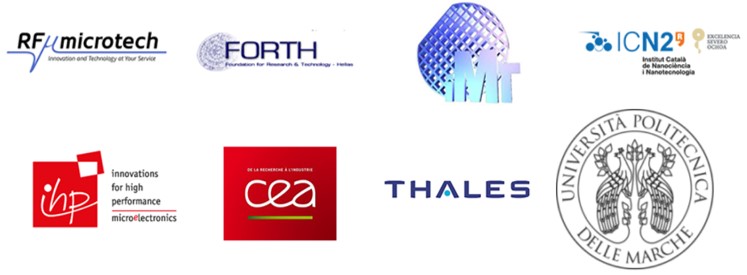Artificial permittivity and permeability engineering for future generation sub wavelength analogue integrated circuits and systems
Type of the project: Prizes for participation in Horizon 2020 |
NANOPOLY project has received funding from the European Union’s Horizon 2020 Research and Innovation Programme under Grant Agreement No. 829061 |

Abstract project
NANOPOLY proposes a ground-breaking, yet cost effective, method to extend our control over impedance and parasitic phenomena in monolithic circuit components, by independently tuning electric permittivity and magnetic permeability of the integrated layers to values far beyond what nature can provide. This approach will re-define all components used in existing analogue circuit design regardless of technology. NANOPOLY will implement this concept on existing technology (such as SiGe) and will also employ novel 2D materials characterized by high mobility, in order to complement minimal thickness and transferability with impedance engineering, thus obtaining unprecedented performance of electronic components. This scheme (i.e. the meta-layers complemented with 2D materials) aims at providing an entirely novel concept of meta-electronics that promises a nano-sized circuit platform with a new performance envelope, useful in all future analogue applications such as miniaturized consumer electronics, health monitoring, high-end THz applications. NANOPOLY develops also 2D material SiGe-based Tx/Rx (emitting / receiving) modules including the antenna with a total footprint of λ/20 and state-of-the-art performance.


